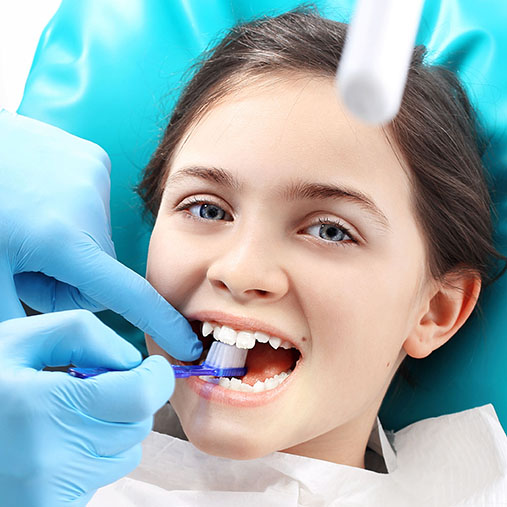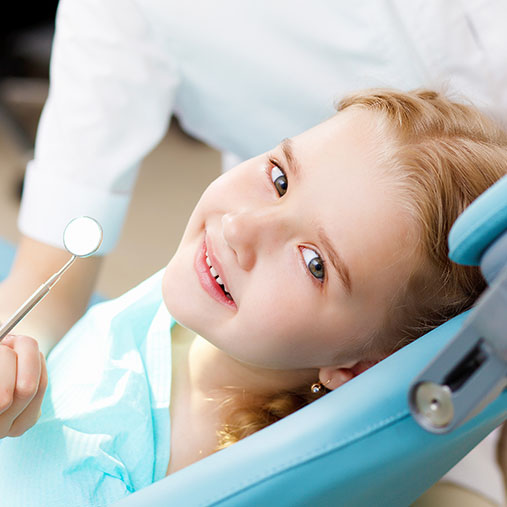You should see your dentist at least once per year for an exam to check for any problems in the teeth or gums. If you’re at a high risk for dental problems, we can schedule more frequent visits.
Dental examinations allow dentists to identify problems and take care of them right away. During these examinations, we check for dental conditions and create a treatment plan that works for you.
You’ll love the way your teeth feel after a thorough cleaning from our in-house oral hygienist. We use the latest technology so your teeth feel squeaky clean, and will also show you how to maintain your smile with brushing and flossing at home. It is important for children to learn to care for their teeth at home from an early age and scheduling cleanings with our oral hygienist is a fun, easy way for them to learn.
A topical fluoride treatment is applied after a professional cleaning. Usually a fluoride gel or foam is placed in mouth shaped trays and inserted into the mouth for teeth to “soak” in for a few minutes. After fluoride application, we will ask you not to eat or drink for at least 30 minutes to allow for optimum absorption. Fluoride can re-mineralize small imperfections in the tooth enamel by attracting calcium to the teeth and can actually make teeth stronger! Years of research and use have proven fluoride to be a safe and effective means of fighting and preventing tooth decay.
A sealant is a plastic material applied on the chewing surfaces of the back teeth. The resin flows into the grooves of the teeth and once the pits and grooves are covered, food and plaque cannot get in. The sealant forms a barrier against acid attacks which promote cavity formation.
The adult teeth most susceptible to cavities are the first and second adult molars. These teeth have deeper pits and grooves that trap plaque and bits of food. Being the most posterior teeth, these pits and grooves are hard to keep clean because toothbrush bristles cannot get into them. However, any tooth with grooves or pits may benefit from sealant placement.
Sealants are usually applied in a single visit and are applied directly to the surface of the tooth.



